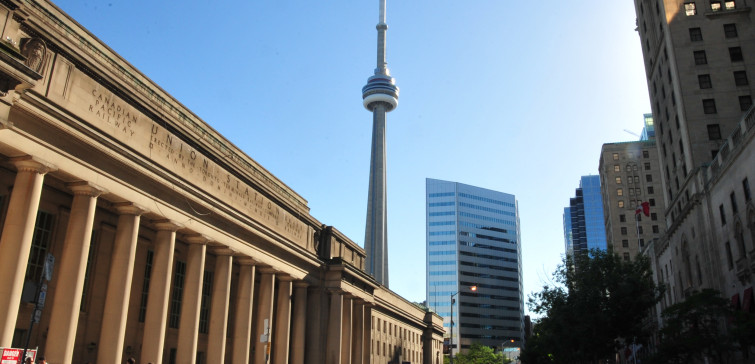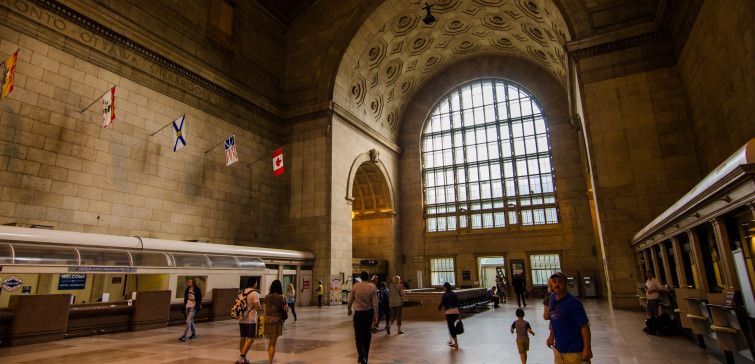GO Transit Toronto Union Station Platform Risk Assessments
GO Transit, a division of Metrolinx, is the regional public transit system in Southern Ontario, Canada operating in the Greater Toronto and Hamilton Area. GO Transit’s operations include an extensive network of train lines and bus routes that range as far as Niagara Falls to the south, Waterloo to the west, Peterborough to the east, and Barrie to the north.
GO Transit carries approximately 69.5 million passengers annually across multiple modes.
GO’s network includes seven commuter rail lines, 65 stations, including the iconic Union Station in Downtown Toronto. In fact, 91% of the 194,000 train commuters ride to and from Union Station. GO trains are pulled or pushed by MP40 locomotives, which have the capacity to accommodate 12 bi-level locomotives. Each bi-level car has the capacity to seat 162 passengers and with substantial standing capacity as well. Trains are staffed with a qualified train operator, conductor and customer service ambassador.
The critical priority for GO Transit was the inherent safety of the passengers on the platforms before, during, and after train-platform operations. With such heavy passenger movement, GO Transit were interested in assessing the current and future level of risk at the Platform-Train Interface for all platforms at the Union Station Train Shed.
Network Rail’s in-depth experience managing platform-train interfaces from a safety critical perspective gave our team the compulsory skills to perform comprehensive risk assessments.
GO Transit Toronto Union Station Platform Risk Assessments
Under difficult timescales, GO Transit sought immediate help from a third party expert to perform several platform risk assessments. The assessments were to include both a benchmark of current platform safety hazards and retrospective comparisons against best practices within the rail industry. The outcome was a comprehensive report with a list of prioritized safety hazards and actionable mitigations to assist GO Transit in their continued safety initiatives at Union Station.
Network Rail’s international consulting arm, Network Rail Consulting, was commissioned by GO Transit to perform the following risk assessments:
Risk Assessment #1:
Determine the residual safety hazard risks at Platform-Train Interface for all platforms at Union Station.
Risk Assessment #2:
Review the requirements and implications of installing barriers at 28 No Standing Zones on platforms at Union Station. Network Rail Consulting utilized Network Rail’s Hazard and Operability Study (HAZOP) process to complete the scope of work within the demanding timescale. The methodology for both risk assessments included:
- Comprehensive review of all safety critical platform designs, crowd management plans, footfall data, and accident claims
- Host Risk Identification Sessions with key staff from multifunctional disciplines
- Utilize Network Rail’s Corporate Risk Matrix
GO Transit Toronto Union Station Platform Risk Assessments
The key output was the successful completion of the commissioned risk assessments and production of a presentation and report outlining the risks and proposed improvements that can be taken forward. More specific HOZOP outputs included:
- Identifying residual risks post platform cutbacks
- Identifying existing mitigations
- Prioritizing risk per identified safety hazard
- Categorizing further mitigations
Toronto Union Station Platform Risk Assessments
Client: Metrolinx GO Transit
Location: Toronto, Canada
Start date: 2016 (August)
End date: 2016 (September)
Duration: 1 month
Services provided: Safety review risk assessments





